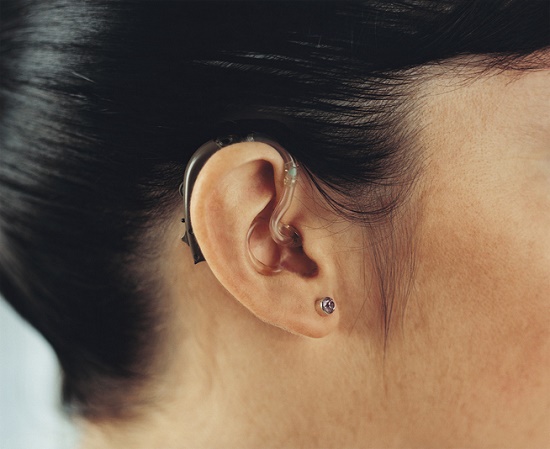
Have you ever had problems hearing in a crowded room or restaurant but can hear without any problem at home? Do you have particular difficulty hearing higher-pitched voices or TV dialogue?
If so, you might have hearing loss, and hearing aids may be able to help you.
But how do hearing aids work exactly? Are they basic amplifiers, or something more elaborate?
This week we’ll be focusing on how hearing aids work and how they are a bit more sophisticated than many people recognize. But first, let’s start with how normal hearing works.
How Normal Hearing Works
The hearing process starts out with sound. Sound is essentially a kind of energy that travels in waves, like ripples in a lake. Things cause sound in the environment when they generate vibrations in the air, and those vibrations are eventually caught and sent to the ear canal by the outer ear.
After passing through the ear canal, the sound vibrations strike the eardrum. The eardrum then vibrates, amplifying the original signal which is then transmitted by the middle ear bones to the snail-shaped organ of the middle ear referred to as the cochlea.
The cochlea is filled with fluid and small nerve cells called cilia. The vibrations sent from the middle ear bones shake the fluid and stimulate the cilia. The cilia then transmit electrical signals to the brain and the brain interprets those signals as sound.
With the majority of cases of noise-induced hearing loss, there is damage to the cilia. So, the arriving signal to the brain is faded and sounds seem quieter or muffled. But not all frequencies are uniformly impaired. Usually, the higher-pitched sounds, including speech, are impacted to a greater degree.
In a raucous setting, like a restaurant, your ability to hear speech is diminished because your brain is receiving a weakened signal for high-frequency sounds. On top of that, background noise, which is low-frequency, is getting through normally, drowning out the speech.
How Hearing Aids Can Help
You can understand that the solution is not simply amplifying all sound. If you were to do that, you’d just continue to drown out speech as the background noise grows to be louder relative to the speech sounds.
The solution is selective amplification of only the sound frequencies you have difficulty hearing. And that is only feasible by having your hearing professionally evaluated and your hearing aids professionally programmed to magnify these specific frequencies.
How Hearing Aids Selectively Amplify Sound
Modern day hearing aids consist of five interior parts: the microphone, amplifier, speaker, battery, and computer chip. But hearing aids are not just simple amplifiers—they’re intricate electronic devices that alter the characteristics of sound.
This occurs via the computer chip. Everyone’s hearing is one-of-a-kind, like a fingerprint, and so the frequencies you need amplified will differ. The incredible part is, those frequencies can be found exactly with a professional hearing test, technically known as an audiogram.
Once your hearing professional has these figures, your hearing aid can be programmed to amplify the frequencies you have the most difficulty with, strengthening speech recognition in the process.
Here’s how it works: the hearing aid receives sound in the environment with the microphone and transmits the sound to the computer chip. The computer chip then converts the sound into digital information so that it can differentiate between various frequencies.
Then, dependent on the programmed settings, the high-frequency sounds are amplified, the low-frequency background sounds are repressed, and the improved sound is presented to your ear via the speaker.
So will your hearing revert completely to normal?
While your hearing will not entirely revert to normal, that shouldn’t stop you from attaining significant gains in your hearing. For the majority of individuals, the amplification delivered is all they require to comprehend speech and indulge in effective and effortless communication.
Think about it this way. If your eye doctor told you that they could improve your vision from 20/80 to 20/25, would you go without prescription glasses because you couldn’t get to 20/20? Absolutely not; you’d be able to function just fine with 20/25 vision and the gain from 20/80 would be substantial.
Are you ready to discover the improvements you can attain with modern hearing aids? Give us a call today!